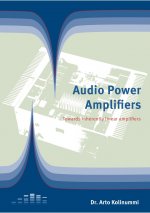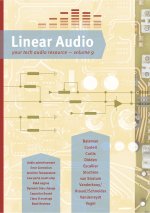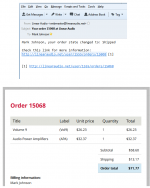No problem, if Mr Hegglun is not in a hurry.
I have them as spare parts to fix SSB (ham) marine transceivers, fun to do and a cheap way to make friends in the Caribbean
Lots of bums overthere.
(last time I had a drink with the guy who used to run the Radio Holland branch on Curaçao, he was about to pop over. Got word a week ago that he recently deceased)
First opportunity to pick them up is the may holliday break.
The SOP8 package is long gone obsolete, but still plenty sources for the SSOP versions, even Mouser has several thousand left.
I have them as spare parts to fix SSB (ham) marine transceivers, fun to do and a cheap way to make friends in the Caribbean

Lots of bums overthere.
(last time I had a drink with the guy who used to run the Radio Holland branch on Curaçao, he was about to pop over. Got word a week ago that he recently deceased)
First opportunity to pick them up is the may holliday break.
The SOP8 package is long gone obsolete, but still plenty sources for the SSOP versions, even Mouser has several thousand left.
I have redrawn the cubeA input stage to make it more intuitive that it's a differential input stage, see attached.
The actual diff stage is the two lower devices from U1:A and U1:B; the top devices can be considered cascode devices. You can see the input on pin 1, feedback on pin 3, single-ended output on pin 4 going to the output stage (Vpre).
R11 sets the tail current to aout 1mA.
Hope this helps,
jan
The actual diff stage is the two lower devices from U1:A and U1:B; the top devices can be considered cascode devices. You can see the input on pin 1, feedback on pin 3, single-ended output on pin 4 going to the output stage (Vpre).
R11 sets the tail current to aout 1mA.
Hope this helps,
jan
Attachments
It's two differential pairs, with the same inputs (M12i and M34i) and the same outputs (M12o and M34o)
One diff pair is made with Nchannel MOSFETs, and its "current source" tail of the long tailed pair, is 10K resistor R11.
The other diff pair is made with Pchannel MOSFETs, and its "current source" tail of the long tailed pair, is 10K resistor R10.
Perfectly symmetric.
All four MOSFETs are enhancement mode (CMOS digital logic is made with enhancement mode devices) and remain in the "saturation region" where the I-V curves are flat, when the output difference |M12o - M34o| is less than ~ 2 volts or so.
One diff pair is made with Nchannel MOSFETs, and its "current source" tail of the long tailed pair, is 10K resistor R11.
The other diff pair is made with Pchannel MOSFETs, and its "current source" tail of the long tailed pair, is 10K resistor R10.
Perfectly symmetric.
All four MOSFETs are enhancement mode (CMOS digital logic is made with enhancement mode devices) and remain in the "saturation region" where the I-V curves are flat, when the output difference |M12o - M34o| is less than ~ 2 volts or so.
Whoever is first
En Garde !
(just as I thought I was showing progress with my inability to withstand being challenged, good thing I still loathe flying)
As I'm well underway of polluting this thread, does the option to reverse the phase of the 3d harmonic not imply that it could be cancelled in bridged operation ?
(LA8, page 155, 3d paragraph)
Well, its the time of year again to publish a new Linear Audio volume; this is our 10th issue, Volume 9!
And surprise - we now also have a very interesting full-length (well, 307 pages) book: Audio Power Amplifiers - towards inherently linear amplifiers. From Finland, a country with a reputation for audio expertise, written by Dr. Arto Kolinummi. Mark that name.
As to Volume 9, we have the usual smorgasbord of interesting and thought-provoking articles:
Tutorials - John Escallier discusses semiconductor dissipation, junction temperatures and all you need to know for a reliable design.
Circuit design - John Vanderkooy teamed up with Kevin Krauel and Todd Schneider to design A Low Parts Count Audiophile Power Amplifier – look Ma, only three active devices!
After a short digression to complete his part 1 article, Giovanni Stochino completes his landmark series with part 2 of Recent investigations and developments related to feedback and feed-forward error correction.
If you are interested in testing several phono preamp topologies and device choices, Burkhard Vogel’s The RIAA Phono-Amp Engine II provides the perfect testbed and comparison setup.
Test and Measurement - Cyril Bateman’s article series on ‘capacitor sound’ in Electronics World needed to be updated with new insights and parts, after more than a decade. Capacitor sound revisited - Distortion mechanisms behind the sound of Wound and Stacked Capacitors tells all. Your Editor took some time out from editing to investigate Dynamic measurement of power amp quiescent current – Instrumentation and findings. Yes, it exists; and no, it doesn’t hurt.
In Class D – an audiophile’s dream? Stan Curtis mulls over the strengths and weaknesses ofclass D
Book reviews - Bob Cordell, a very experienced user of Linear Technology’s LTspice simulator, reviews Gilles Brocart’s The LTSPICE IV Simulator – Manual, Methods and Applications and wished he’d had it years ago.
Douglas Self’s Small Signal Audio Design is already in its 2nd edition; Jean-Pierre Vanderreydt gives it a thorough review, and likes what he reads.
Check it all out at the usual place.
Then, Arto Kolinummi's book: Many audio power amplifiers measure the same yet it is claimed they sound different - so maybe we don't measure the right things? Maybe there is something internal to an amplifier that makes a difference yet is hidden for our usual distortion analysers by the ubiqutous feedback loop?
Arto decided to check it out and started a project to design an amplifier that is inherently linear, before the application of feedback.
This book documents his adventure which was very successful - an amplifier that challenges the linearity open loop of the best low distortion high feedback amps on the planet. Not that he has anything against feedback - you can still wrap it around his amps and get performance that is literally out of this world, but it is not necessary. Does it sound better? Arto has not performed any scientific listening tests although he is conviced that inherently linear amplifiers do sound better. Be that as it may, this book is a treasure trove of ultra-linear circuits, from (balanced) input stages to voltage amplifier (or transimpedance) stages to output stages. The book also has extensive information on many different ways a signal can be distorted, how to measure it and, most importantly, how to avoid it.
If you are seriously interested in audio power amp design, check it out.
Back Flap by Nelson Pass Table of Contents 307 pages
Enjoy!
Jan
And surprise - we now also have a very interesting full-length (well, 307 pages) book: Audio Power Amplifiers - towards inherently linear amplifiers. From Finland, a country with a reputation for audio expertise, written by Dr. Arto Kolinummi. Mark that name.
As to Volume 9, we have the usual smorgasbord of interesting and thought-provoking articles:
Tutorials - John Escallier discusses semiconductor dissipation, junction temperatures and all you need to know for a reliable design.
Circuit design - John Vanderkooy teamed up with Kevin Krauel and Todd Schneider to design A Low Parts Count Audiophile Power Amplifier – look Ma, only three active devices!
After a short digression to complete his part 1 article, Giovanni Stochino completes his landmark series with part 2 of Recent investigations and developments related to feedback and feed-forward error correction.
If you are interested in testing several phono preamp topologies and device choices, Burkhard Vogel’s The RIAA Phono-Amp Engine II provides the perfect testbed and comparison setup.
Test and Measurement - Cyril Bateman’s article series on ‘capacitor sound’ in Electronics World needed to be updated with new insights and parts, after more than a decade. Capacitor sound revisited - Distortion mechanisms behind the sound of Wound and Stacked Capacitors tells all. Your Editor took some time out from editing to investigate Dynamic measurement of power amp quiescent current – Instrumentation and findings. Yes, it exists; and no, it doesn’t hurt.
In Class D – an audiophile’s dream? Stan Curtis mulls over the strengths and weaknesses ofclass D
Book reviews - Bob Cordell, a very experienced user of Linear Technology’s LTspice simulator, reviews Gilles Brocart’s The LTSPICE IV Simulator – Manual, Methods and Applications and wished he’d had it years ago.
Douglas Self’s Small Signal Audio Design is already in its 2nd edition; Jean-Pierre Vanderreydt gives it a thorough review, and likes what he reads.
Check it all out at the usual place.
Then, Arto Kolinummi's book: Many audio power amplifiers measure the same yet it is claimed they sound different - so maybe we don't measure the right things? Maybe there is something internal to an amplifier that makes a difference yet is hidden for our usual distortion analysers by the ubiqutous feedback loop?
Arto decided to check it out and started a project to design an amplifier that is inherently linear, before the application of feedback.
This book documents his adventure which was very successful - an amplifier that challenges the linearity open loop of the best low distortion high feedback amps on the planet. Not that he has anything against feedback - you can still wrap it around his amps and get performance that is literally out of this world, but it is not necessary. Does it sound better? Arto has not performed any scientific listening tests although he is conviced that inherently linear amplifiers do sound better. Be that as it may, this book is a treasure trove of ultra-linear circuits, from (balanced) input stages to voltage amplifier (or transimpedance) stages to output stages. The book also has extensive information on many different ways a signal can be distorted, how to measure it and, most importantly, how to avoid it.
If you are seriously interested in audio power amp design, check it out.
Back Flap by Nelson Pass Table of Contents 307 pages
Enjoy!
Jan
Attachments
Last edited:
Well, its the time of year again to publish a new Linear Audio volume; this is our 10th issue, Volume 9!
And surprise - we now also have a very interesting full-length (well, 307 pages) book: Audio Power Amplifiers - towards inherently linear amplifiers. From Finland, a country with a reputation for audio expertise, written by Dr. Arto Kolinummi. Mark that name.
As to Volume 9, we have the usual smorgasbord of interesting and thought-provoking articles:
Tutorials - John Escallier discusses semiconductor dissipation, junction temperatures and all you need to know for a reliable design.
Circuit design - John Vanderkooy teamed up with Kevin Krauel and Todd Schneider to design A Low Parts Count Audiophile Power Amplifier – look Ma, only three active devices!
After a short digression to complete his part 1 article, Giovanni Stochino completes his landmark series with part 2 of Recent investigations and developments related to feedback and feed-forward error correction.
If you are interested in testing several phono preamp topologies and device choices, Burkhard Vogel’s The RIAA Phono-Amp Engine II provides the perfect testbed and comparison setup.
Test and Measurement - Cyril Bateman’s article series on ‘capacitor sound’ in Electronics World needed to be updated with new insights and parts, after more than a decade. Capacitor sound revisited - Distortion mechanisms behind the sound of Wound and Stacked Capacitors tells all. Your Editor took some time out from editing to investigate Dynamic measurement of power amp quiescent current – Instrumentation and findings. Yes, it exists; and no, it doesn’t hurt.
In Class D – an audiophile’s dream? Stan Curtis mulls over the strengths and weaknesses ofclass D
Book reviews - Bob Cordell, a very experienced user of Linear Technology’s LTspice simulator, reviews Gilles Brocart’s The LTSPICE IV Simulator – Manual, Methods and Applications and wished he’d had it years ago.
Douglas Self’s Small Signal Audio Design is already in its 2nd edition; Jean-Pierre Vanderreydt gives it a thorough review, and likes what he reads.
Check it all out at the usual place.
Then, Arto Kolinummi's book: Many audio power amplifiers measure the same yet it is claimed they sound different - so maybe we don't measure the right things? Maybe there is something internal to an amplifier that makes a difference yet is hidden for our usual distortion analysers by the ubiqutous feedback loop?
Arto decided to check it out and started a project to design an amplifier that is inherently linear, before the application of feedback.
This book documents his adventure which was very successful - an amplifier that challenges the linearity open loop of the best low distortion high feedback amps on the planet. Not that he has anything against feedback - you can still wrap it around his amps and get performance that is literally out of this world, but it is not necessary. Does it sound better? Arto has not performed any scientific listening tests although he is conviced that inherently linear amplifiers do sound better. Be that as it may, this book is a treasure trove of ultra-linear circuits, from (balanced) input stages to voltage amplifier (or transimpedance) stages to output stages. The book also has extensive information on many different ways a signal can be distorted, how to measure it and, most importantly, how to avoid it.
If you are seriously interested in audio power amp design, check it out.
Back Flap by Nelson Pass Table of Contents 307 pages
Enjoy!
Jan
Hi Jan,
Wow! This sounds like yet another fantastic issue of LA. I can't wait to read it. Thanks for giving us this detailed preview.
Cheers,
Bob
Hi Jan,
Wow! This sounds like yet another fantastic issue of LA. I can't wait to read it. Thanks for giving us this detailed preview.
Cheers,
Bob
On its way ;-)
It's two differential pairs, with the same inputs (M12i and M34i) and the same outputs (M12o and M34o)
One diff pair is made with Nchannel MOSFETs, and its "current source" tail of the long tailed pair, is 10K resistor R11.
The other diff pair is made with Pchannel MOSFETs, and its "current source" tail of the long tailed pair, is 10K resistor R10.
Perfectly symmetric.
All four MOSFETs are enhancement mode (CMOS digital logic is made with enhancement mode devices) and remain in the "saturation region" where the I-V curves are flat, when the output difference |M12o - M34o| is less than ~ 2 volts or so.
Mark, missed this post of yours - you're right of course. Right on the Mark too (sorry for the pun - couldn't resist) about the 2V max.
jan
good thing I still loathe flying
Yes definitely.
Bob I'm working on your questions right now.
that Murphy guy
Au contraire, click the Vol 8 link and still wind up at Vol 9
(the Ajax reference was truely shocking, on the other hand)
(the Ajax reference was truely shocking, on the other hand)
I wonder how many here get that inside joke
Jan
Wondered why I couldn't put in a discount code anywhere, placed my order, and then came here to see that I should've waited a day or two maybe... 
I'm not into football...
I wonder how many here get that inside joke
I'm not into football...
Jan, I just wanted to point out the links at the end of this PDF don't work:
http://linearaudionet.solide-ict.nl/sites/linearaudio.net/files/volume1ltecb.pdf
http://linearaudionet.solide-ict.nl/sites/linearaudio.net/files/volume1ltecb.pdf
Jan, I ordered both v.9 and APA from the Linear Audio website and received an email notification that my order was Shipped. Attachment below.
However, the mailing envelope received April 15th only contained v.9 and not APA. Does your fulfillment group send two books in two different envelopes?
Congratulations on v9, it's wonderful!
Mark Johnson
However, the mailing envelope received April 15th only contained v.9 and not APA. Does your fulfillment group send two books in two different envelopes?
Congratulations on v9, it's wonderful!
Mark Johnson
Attachments
- Home
- General Interest
- Everything Else
- New Linear Audio publication!


